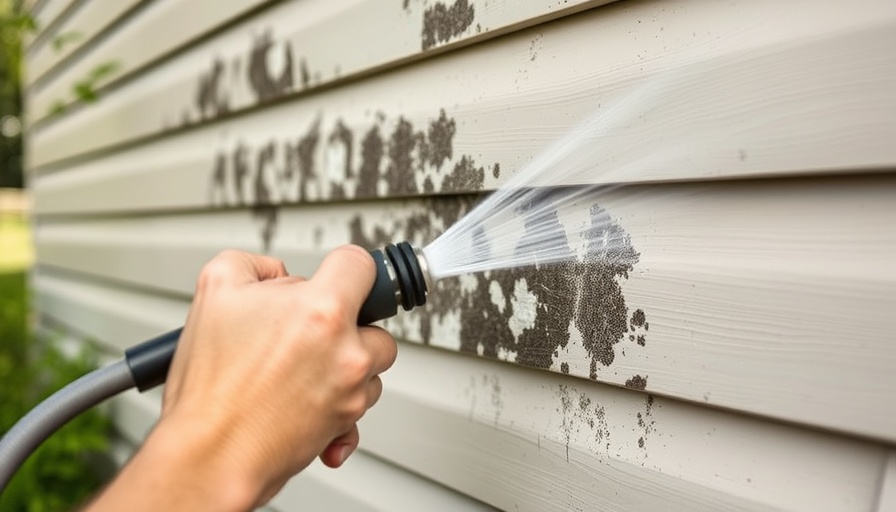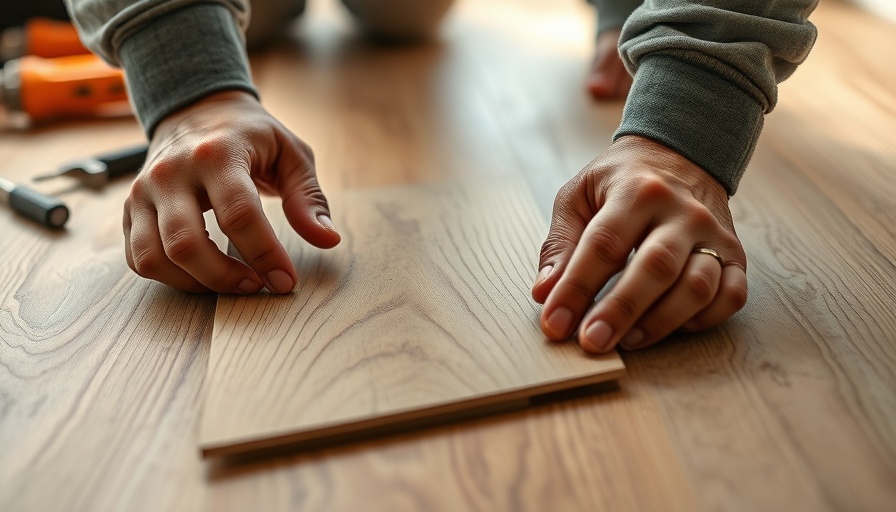
Understanding Mold: The Silent Invader in Our Homes
Mold and mildew often sneak into our homes unnoticed, yet they pose significant risks to both our health and property. These fungi thrive in moist, warm environments and can trigger allergies, asthma, and other health problems, especially in sensitive individuals. Homeowners must act swiftly at the first sign of mold, not just to remove it but to understand the underlying causes, which often point to greater moisture issues in the building structure.
Why Proactive Mold Removal is Crucial
Many homeowners dismiss small mold patches as minor nuisances. However, neglecting mold can lead to costly repairs and serious health implications down the line. Identifying and addressing moisture sources must be a priority. For instance, mold near plumbing fixtures might be a sign of hidden leaks that, if ignored, could cause structural damage over time. Therefore, mold removal isn't just about cleanliness; it's also about protecting your investment and ensuring a healthy living environment.
Spotting the Warning Signs: Your First Step in Prevention
Before you can effectively tackle mold, you need to be able to identify it. Beyond the obvious dark patches on walls or ceilings, mold can also hide in less visible areas. Look for signs like a musty odor, water stains, or dampness in materials. It's also essential to conduct periodic checks in areas prone to moisture, like bathrooms, basements, and kitchens.
Discovering the Source: Plumbing and External Inspections
The situation might be more dire than it first appears. If you're seeing mold in your home, check around plumbing for leaks. A single leak can cause extensive mold growth, indicating potential issues lurking in the walls. Conducting a thorough inspection of the exterior of your house can also help, as leaks from gutters or roofs often contribute to interior mold problems.
The Importance of Ductwork Inspection
Another often-overlooked area where mold can develop is within your heating, ventilation, and air conditioning (HVAC) ductwork. If mold is found near the ducts, condensation may be the issue due to poorly insulated pipes. This can create a perfect breeding ground for mold spores.
Quick Mold Tests: Determining Your Next Steps
Not all discolored patches on walls are mold; sometimes, dirt can mimic mold's appearance. A simple test using a diluted bleach solution can reveal the true nature of the growth. However, while DIY tests can be helpful, they might not suit everyone's needs, so further professional testing might be warranted for extensive mold problems.
Easy DIY Mold Removal Tips
Once you pinpoint the mold, you can tackle removal with a few simple and effective techniques:
1. Cleaning solutions: A mixture of vinegar and baking soda can work wonders. Use it to scrub the affected areas, ensuring you wear protective gear.
2. Dehumidifiers: These devices can help manage moisture levels in your home, making it less inviting for mold to return.
3. Regular maintenance: Regularly inspect and maintain plumbing and roofing systems to prevent leaks and subsequent mold growth.
Future-proofing your Home: Prevention Strategies
After removing mold, it's essential to think about how to stop it from coming back. This includes ensuring proper ventilation in moisture-prone areas, using mold-resistant paint, and repairing any cracks in walls or foundations that could invite moisture. Remember, taking these preventive measures not only maintains your home's aesthetic but also safeguards the health of those who live in it.
Empower Your Home: The Importance of Home Maintenance
Taking ownership of home maintenance can seem overwhelming, yet it also presents an opportunity for improvement and personal empowerment. By educating yourself about the risks and solutions related to mold, homeowners can create a healthier, happier living space, well-equipped to withstand the challenges of time and nature. Staying informed, proactive, and diligent in home upkeep will ensure your home remains both beautiful and safe.
Considering the intricate connection between our environments and our health, understanding how to handle situations like mold growth is invaluable. Not only will it enhance your living conditions, but it can also transform your perception of home upkeep into a fulfilling and proactive journey.
 Add Row
Add Row  Add
Add 




Write A Comment